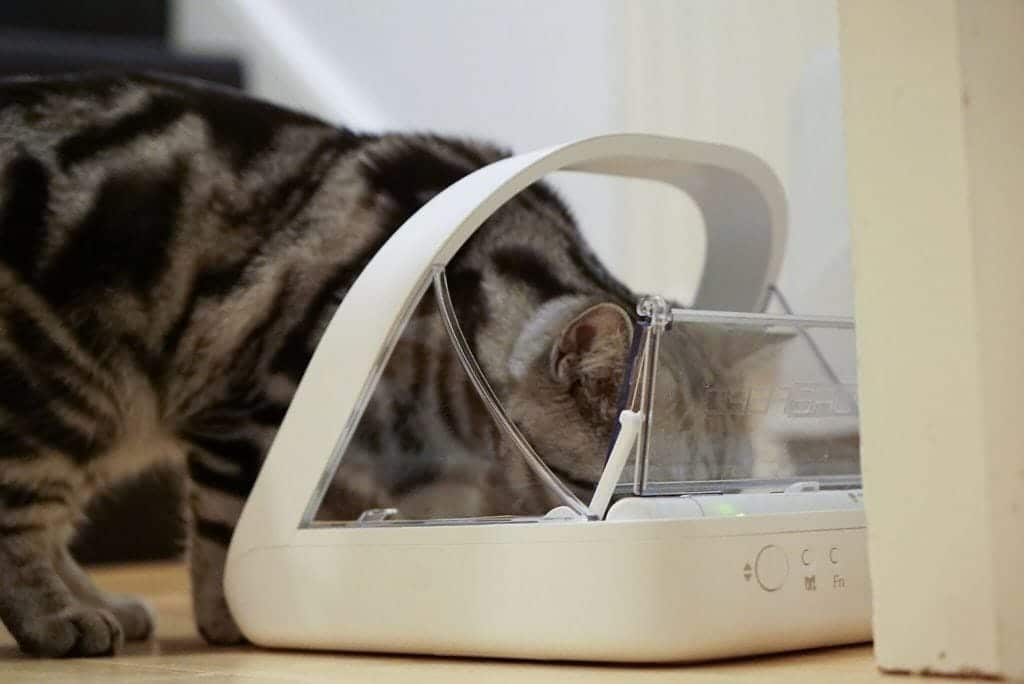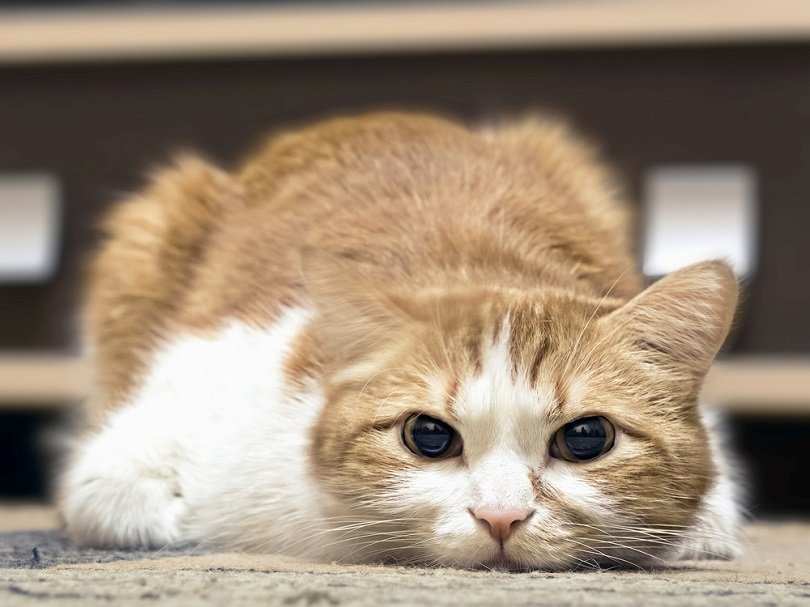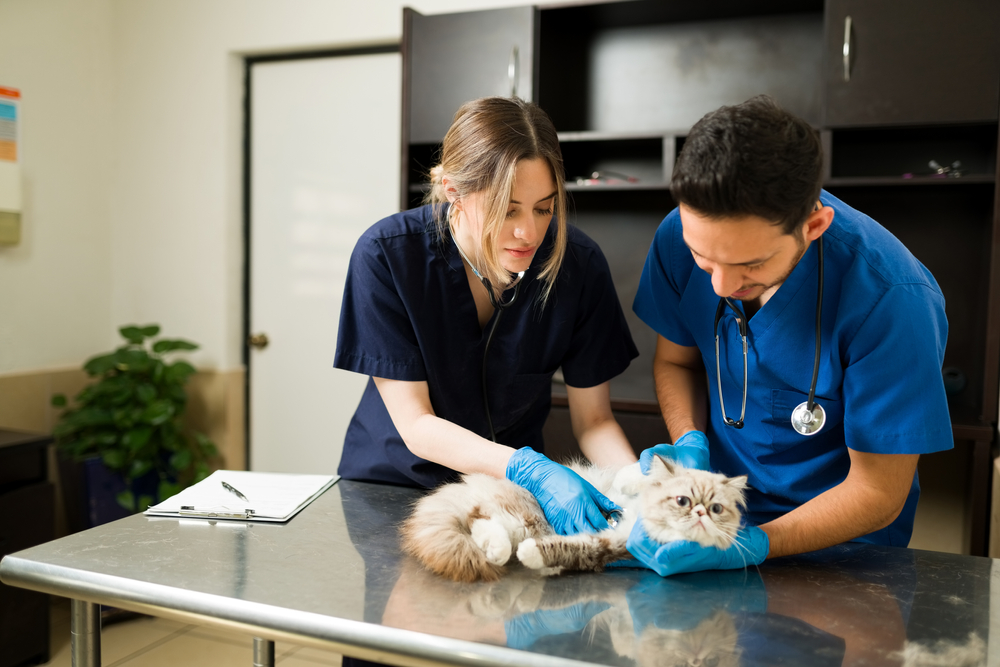Pet care has gotten more involved and complicated as time goes on and we learn more about how to optimally care for our pets.
Cats are naturally more independent than dogs and can go longer periods without their humans than their canine counterparts. Because of this, experts began developing different types of automatic feeders for when pet owners are kept away from their favorite felines due to long work hours or days of travel. These feeders can come in handy but should only be used as an adjunct to human interaction and care—not as a substitute.
A gravity feeder is one type of automatic feeder that has attracted many users. Gravity feeders automatically refill the food bowl from a storage container above whenever there is space for food to drop down. This article will explain how they work and their advantages and disadvantages and compare them to other types of automatic feeders.

How Do Gravity Feeders Work?
Gravity feeders are popular types of automatic feeders used for cats. They are budget friendly and widely available both online and in stores. They take advantage of gravity to automatically refill a bowl from a storage container whenever space is made in the bowl. As your cat eats, the gravity feeder automatically replaces the kibble.
These devices offer convenience and reassurance for busy cat owners who may work long hours or travel regularly, but they have a few drawbacks too. Gravity feeders are usually made of plastic, making them easy to keep clean, and hold between 1 and 3 pounds of food.
There are also gravity water dispensers that work in the same way. Gravity feeders do not need to be plugged in, nor do they use batteries, making them useful both indoors and outdoors.

What Are Some Different Types of Feeders Besides Gravity Feeders?
If you’re looking for something beyond the basic utility of a gravity feeder, there is a range of power-based options available to meet your cat’s needs.
- Electronic Feeders: These have programmable timers that can dispense a predetermined amount of food at set times of the day or night. Some models can dispense dry, moist, and wet food and allow for portion control. Many electronic feeders are controlled using apps, so you can make changes to the programming anywhere you have your phone.
- Microchip Feeders: These are designed to work with microchip technology and are especially useful for multi-cat households. These feeders use your cat’s microchip (worn on a collar) to identify them and dispense food only to that specific cat. This helps curb overeating and ensures that each cat gets the right amount of food that they need.
- Slow Feeders: These are designed to slow down your cat’s eating speed. Some cats will wolf down their meal with gusto and end up with gastrointestinal distress. Slow feeders often have obstacles or ridges inside the bowl that force your cat to eat more slowly, which can help prevent vomiting, bloating, and other digestive issues.
- Wet Food Dispensers: These are specifically designed to dispense wet food. They typically use ice packs or other cooling mechanisms to keep the food fresh for longer.
- Combination Feeders: These combine different types of feeders. For example, they may have a gravity feeder for dry food and an electronic feeder for wet food.
Where Are Gravity Cat Feeders Used?
Gravity feeders are particularly useful and popular because they can be used in houses, apartments, or even outside on a deck or a balcony. They do not need to be plugged in, nor do they need batteries. Gravity feeders are a great option for multi-cat households, as they provide food continuously throughout the day. However, be mindful of keeping them out of reach of any dogs or other pets that live in the home, as cat food may upset their stomachs!

Advantages of Gravity Feeders
If you need a low-cost way to ensure your cat gets their meals on time, look no further than a basic gravity feeder. They’re easy to clean, require no set-up, and only take up a small amount of space. If you work long hours or are going out of town, and just want to ensure your cat has access to food at all times, a gravity feeder should meet your needs.
Disadvantages of Gravity Feeders
The biggest drawback to using an automatic feeder is that the amount of food your cat has access to cannot be controlled. Some cats will happily eat whenever food is available—they are opportunistic eaters! A gravity feeder is a poor match for cats that tend to overeat, as obesity is linked to several health problems. They’re also a poor match for cats that eat too quickly and end up with stomach pains or vomiting up their food.
Gravity feeders can become easy to rely on as an everyday feeding system, which is not at all how they were intended to be used. According to Wirecutter/NYT, no type of automatic feeder should substitute for human interaction and in-person care for your cat. Your cat wants to be connected and in a relationship with their humans, and meal times can be something that is a bonding experience for you and your cat.
Of course, if you are going out of town, there should be a trusted person or professional providing your cat the kind of care that a gravity feeder simply can’t. They should never be used as a fill-in pet sitter.

Frequently Asked Questions (FAQs)
Are Gravity Feeders Appropriate for Multiple Cats?
Yes, but with a few caveats. If your cats eat peaceably together and mealtime doesn’t devolve into a turf war, your cats will be fine sharing a feeder. Be sure to buy one with a hopper big enough to hold enough kibble for all your furry friends.
My Budget Is Tight; Aren’t Automatic Feeders Really Expensive?
If you’re pinching pennies, a gravity feeder is the best choice from the available options. With a price point of around $20 USD, they are affordable, durable, and easy to clean, and you don’t have to worry about buying a replacement due to a technology malfunction.
My Cat Has Some Health Problems; Can I Still Use a Gravity Feeder?
The ultimate resource to address this concern would be your vet, who can better assess your cat’s particular health issues. As gravity feeders do not control portions, if your vet recommended specific portion sizes for your kitty, you should probably not use a gravity feeder. They also won’t work well for cats that get overly excited about their food and gorge themselves; you may come home to some vomit to clean up!

A Quick Reference Guide to Automatic Feeders
| Gravity Feeders | Power-Based (Plug-In or Battery-Operated) Feeders |
| Budget friendly (typically $15–$30) | More expensive (typically $55–$350) |
| Cannot be programmed, bowl automatically refills as food is consumed | Amount of food and when it is dispensed is programmable and can be monitored |
| Cat can overeat | Cat cannot overeat |
| No technology needed/used | Often controlled with apps |
| Only dispenses dry food | Some models can dispense dry, moist, or wet food |
| Can be kept outdoors | Better kept indoors |

Conclusion
Gravity feeders are inexpensive and handy devices that automatically dispense kibble for cats. They can be very useful in certain situations, but like anything, they have both advantages and disadvantages.
Be sure to research the different kinds of automatic feeders out there before making the best choice for you and your cat(s). Keep in mind that no automatic feeder should be a substitute for hands-on care and attention from you and other trusted people.
Featured Image Credit: Kylbabka, Shutterstock
Contents
- How Do Gravity Feeders Work?
- What Are Some Different Types of Feeders Besides Gravity Feeders?
- Where Are Gravity Cat Feeders Used?
- Advantages of Gravity Feeders
- Disadvantages of Gravity Feeders
- Frequently Asked Questions (FAQs)
- Are Gravity Feeders Appropriate for Multiple Cats?
- My Budget Is Tight; Aren’t Automatic Feeders Really Expensive?
- My Cat Has Some Health Problems; Can I Still Use a Gravity Feeder?
- A Quick Reference Guide to Automatic Feeders
- Conclusion










